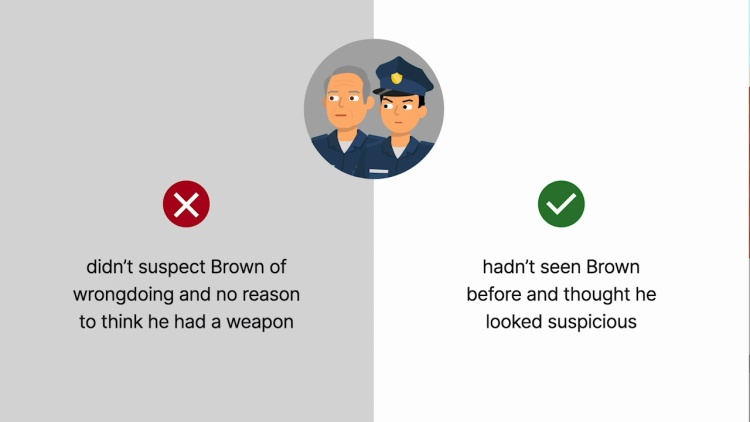Brown v. Texas
United States Supreme Court
443 U.S. 47 (1979)
- Written by Salina Kennedy, JD
Facts
Police officers on patrol in an area known for drug activity observed Brown (defendant) and another man walking in opposite directions in an alley. Although the officers had not seen the two men together, they believed that Brown and the other man looked suspicious and that they had either just met or were about to meet when the officers spotted them. The officers did not suspect Brown of any specific criminal behavior, nor did they have reason to believe that he was armed. The officers stopped Brown, asked him what he was doing, and demanded that he identify himself. Brown refused to identify himself, and the officers arrested him pursuant to a state law that made it a crime for a person who has been lawfully stopped by a police officer and asked for his name and address to refuse to divulge that information. Officers searched Brown several times but found no evidence of criminal activity. Brown unsuccessfully challenged the constitutionality of the state law at trial and was convicted and fined. The United States Supreme Court granted certiorari.
Rule of Law
Issue
Holding and Reasoning (Burger, C.J.)
What to do next…
Here's why 899,000 law students have relied on our case briefs:
- Written by law professors and practitioners, not other law students. 47,000 briefs, keyed to 994 casebooks. Top-notch customer support.
- The right amount of information, includes the facts, issues, rule of law, holding and reasoning, and any concurrences and dissents.
- Access in your classes, works on your mobile and tablet. Massive library of related video lessons and high quality multiple-choice questions.
- Easy to use, uniform format for every case brief. Written in plain English, not in legalese. Our briefs summarize and simplify; they don’t just repeat the court’s language.





